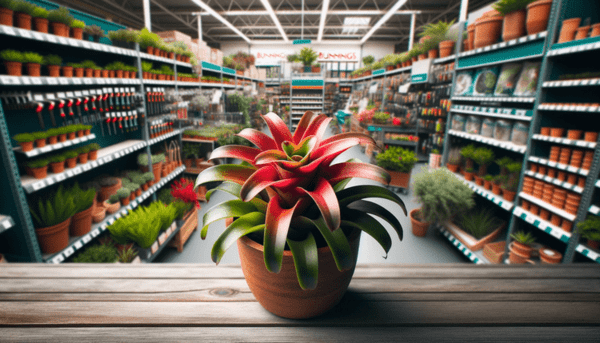
bromeliads
Information for the customer:
- Plant Position: indoor
- Soil Type: well draining , porous
- Watering Needs: moderate: anytime between weekly to fortnightly
- Shade Requirements: yes
- Lighting Requirements: more light: 75% - 100% of daily sun
- Pet Child Friendly: yes
- Air Purifying: yes
Additional Facts and Info:
- Scientific Name: bromeliaceae
- Native To: south america
Extensive Info on the bromeliads:
How do you take care of a Bromeliad?
Location
Bromeliads adore light. Bright, indirect light is ideal for its growth. You can place it in front of an east- or west-facing window or at least 2 meters away from a south-facing window. If the Bromeliad gets too much light, the leaves will turn dark green or will be elongated.
Watering
Water the Bromeliad once every week by filling the cup with water. This is enough to quench the entire plant’s thirst. However, never allow the plant to sit in water for too long because it may result in root rot and build-up salts. It is best to water the Bromeliad every 5 days in summer and every 10 days in winter.
Plant nutrition
Plant nutrition is not necessary for Bromeliads. Bromeliads have a short lifespan and therefore only need the nutrients in the potting soil.
Repotting
It is only necessary to repot the Bromelia if it is a species with a longer lifespan. Most Bromeliads die as soon as their fruit has finished flowering. Repotting the Bromeliad is necessary every year. Repotting the plant every year gives it new nutrients and more room for root growth. The airier soil is also very good for the water flowing through. The best period to repot is spring.
Air-purifying
The Bromeliad is an air-purifying plant. The leaf surface gives the plant extra stomata. A Bromeliad uses these stomata to convert CO2 into oxygen during the night. And that is always good. For you and your home.
Is a Bromeliad toxic?
Bromeliads are not considered poisonous to humans or animals.
Diseases and peculiarities
If the air is too dry, the Bromeliad can suffer from spider mites. To prevent spider mites, it is best to use the plant sprayer once a week. Spider mites are an infection of mites on plants. You can recognize the infection by infected leaves and a kind of cobwebs. If you have come across spider mites, it is best to place the plant outside. Wind and moisture from outside will quickly keep the spider mite away.
Frequently asked questions about the Bromeliad
What should I do with a Bromeliad that has finished flowering?
Once the Bromeliad has finished flowering, the plant will produce a shoot. Allow this shoot to grow to a size of at least 10 cm. Water the shoot via the calyx, and when it is large enough, you can propagate it.
How can I make a Bromeliad flower again?
If the Bromelia doesn't bloom, it is important to provide an optimal environment. Place the plant in a location with plenty of indirect sunlight. Also, make sure that you water the plant via the tube/cone.
Can a Bromeliad survive outdoors in the sun?
A Bromelia can't be placed in full sunlight. The leaves will soon burn. If the leaves burn, make sure you give the plant less sunlight.
Can you take cuttings from a Bromeliad?
Yes, you certainly can. Check out our tips on how to propagate the Bromeliad.